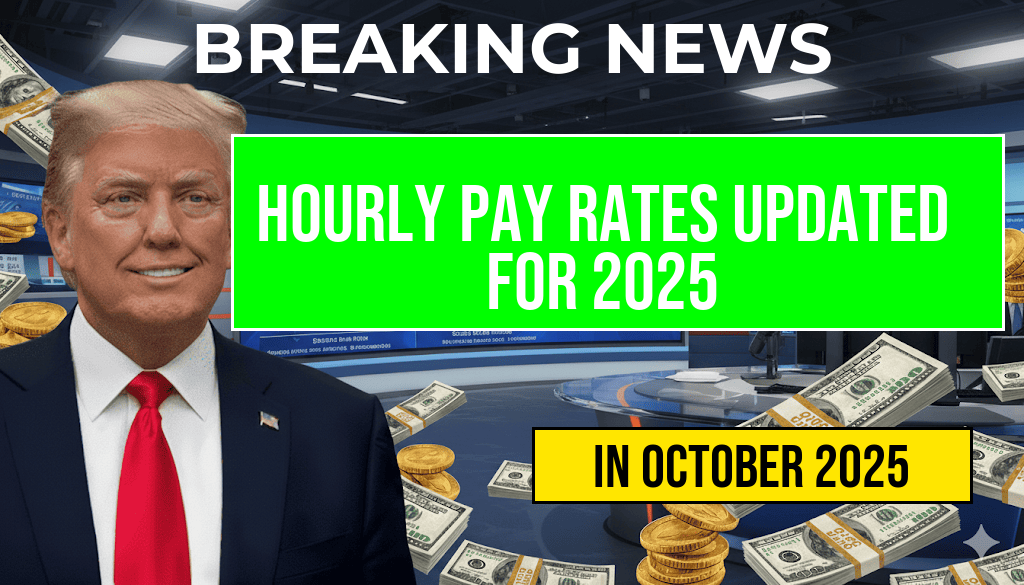On October 4, 2023, the U.S. Department of Labor announced updated hourly pay rates in anticipation of the minimum wage increase set to take effect in 2025. This adjustment comes as part of a broader initiative to enhance workers’ earnings and reduce income disparity across the nation. As the federal minimum wage remains at $7.25 per hour—unchanged since 2009—various states and localities have already begun implementing their own increases, leading to a significant variation in pay rates across the country. The upcoming changes aim to support low-wage workers and address rising living costs, particularly in urban areas. Stakeholders, including labor advocates and business leaders, are closely monitoring these developments as they will have profound implications for wage structures in various industries.
Current State of Minimum Wage Legislation
The current federal minimum wage of $7.25 per hour has been a point of contention for many years, with advocates arguing for a substantial increase to reflect inflation and living expenses. As of 2023, 29 states and numerous cities have set their minimum wage rates above the federal level, with some areas, such as Seattle, implementing rates as high as $15 or more per hour. The discussions around the 2025 increase are expected to amplify as worker advocacy groups rally for better pay.
Projected Increases in Pay Rates
In light of the anticipated increase in 2025, the Department of Labor has released a set of projected hourly pay rates applicable in various sectors. These rates aim to align more closely with the cost of living across different regions. Below is a table summarizing the projected pay increases:
| State | Current Minimum Wage | Projected Minimum Wage (2025) |
|---|---|---|
| California | $15.50 | $17.00 |
| Texas | $7.25 | $10.00 |
| New York | $15.00 | $17.50 |
| Florida | $11.00 | $15.00 |
Implications for Employers and Employees
The projected increases in minimum wage rates are expected to have significant implications for both employers and employees. For businesses, particularly small enterprises, the increased labor costs could lead to adjustments in operational budgets. Employers may need to consider strategies for managing these costs, such as raising prices, optimizing workforce efficiency, or even passing on the costs to consumers.
On the employee side, the wage increases stand to benefit millions of workers, particularly those in low-income positions. Enhanced earnings can improve the quality of life for these employees, helping them cover essential expenses such as housing, food, and healthcare. Furthermore, a higher minimum wage is often linked to increased consumer spending, which can stimulate local economies.
Responses from Stakeholders
Reactions to the announced changes vary among stakeholders. Labor unions and advocacy groups have largely welcomed the news, viewing it as a step toward economic equality. Mary Kay Henry, president of the Service Employees International Union, stated, “This is a historic opportunity to lift millions of Americans out of poverty.” Conversely, some business groups express concerns over the potential impact on employment levels. The National Federation of Independent Business has warned that higher wages could lead to job losses if small businesses struggle to meet payroll demands.
Looking Ahead
As the country prepares for these changes, both employers and workers will need to adapt. The discourse surrounding minimum wage policies will continue to evolve, especially as the 2024 presidential election approaches, with candidates likely to focus on economic reform. Stakeholders are encouraged to stay informed and engaged with ongoing legislative developments.
For more information on wage policies, you can visit the U.S. Department of Labor’s official page here or read further analyses on the implications of wage laws from Forbes.
Frequently Asked Questions
What is the new minimum wage set for 2025?
The new minimum wage for 2025 is set to increase to $15 per hour, as part of the adjustments in response to inflation and cost of living increases.
How will the minimum wage increase affect hourly pay rates?
The minimum wage increase will lead to updated hourly pay rates for many employees, ensuring that wages align with the new federal standard.
When will the new hourly pay rates take effect?
The updated hourly pay rates will take effect on January 1, 2025, following the announcement of the minimum wage increase.
Who will be impacted by the minimum wage increase?
The minimum wage increase will impact a wide range of workers, particularly those in low-wage sectors, ensuring they receive a fairer compensation for their labor.
Are there any exceptions to the minimum wage increase?
Yes, certain categories of workers, such as tipped employees and those in specific industries, may have different minimum wage requirements that could affect their pay rates.

Leave a Reply